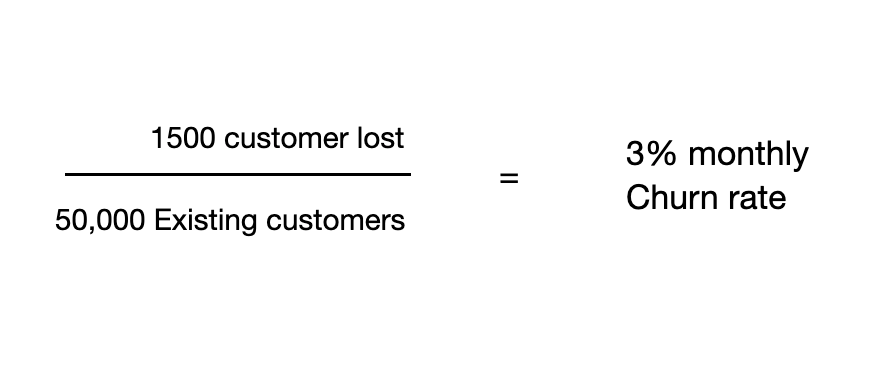Customer Churn Rate
Every customer interaction is a marketing opportunity. If you go above and beyond on the customer service side, people are much more likely to recommend you. - Stewart Butterfield
What is customer churn?
Customer churn can be defined as when a customer unsubscribes from your service, stops purchasing from you, or simply stops engaging with your brand. In other words, your customer leaves you for a competitor.
Research continues to prove that existing customers are worth far more than newly acquired customers. In Bain & Company’s Prescription for Cutting Costs paper, they found increasing customer retention rates by 5% increases profits by 25% to 95%.
Why Churn Rate Matters
Why should you care about churn? Because it suppresses growth.
It’s the leaky bucket analogy: as uninstalled users drip out, you’re struggling to refill your bucket by adding new users. And that gets expensive fast.
Acquiring a new customer is 5-25x more expensive than retaining one
Reducing churn by just 5% can boost profitability by 75%
Improving retention has a 2-4x greater impact on growth than acquisition
The probability of selling to an existing customer is 60-70%, but only 5-20% for a prospect
How to Measure Customer Churn Rate
A customer churn rate allows you to measure how many of your customers leave within a specific time period. Taken as a percentage, a customer churn rate is often measured on a monthly, quarterly, or annual basis.
Before you measure your churn rate, it’s important to first define what constitutes an actual churn event for your business. For a software as a service (SaaS) company, it makes sense to measure churn based on the length of a subscription/membership. You define a churn event as when a customer does not renew or cancels their subscription.
Once you’ve clearly established how you identify your churned customers, you can then calculate your churn rate.
The basic formula for churn rate is:
Churn Rate Example
Let’s say you want to measure customer churn over a month period. As a subscription company with 500,00 customers, you have 15,00 customers leave in the month of September.
A 3% monthly churn rate may not seem like anything to worry about initially. However, if you calculate it on an annual basis, that 3% monthly rate equals 36% of your customer base lost. So in this case, that equates to 180,000 lost customers per year.
5 ways to reduce customer churn
Now that you know how to calculate churn let’s look at some more ways to decrease it.
Here are a few strategies to get you started:
Optimize onboarding. If your onboarding process doesn’t immediately showcase your app’s core value, users will churn. Keep the onboarding process focused on benefits. Strip down complexity, limit the number of steps, and get users to experience your app’s aha moment as fast as possible.
Pay attention to complaints Complaints are like tips of the icebergs – they suggest that the bigger part of the problem is hidden from the view. Are you aware that it takes only 1 negative experience to make 32% of customers stop doing business with a brand they once loved?
Flaunt your competitive advantages How different are you from your competitors? What makes you stand out? What will your customers lose if they decide to quit? Answering these questions will help you define your competitive advantages and then flaunt them more. Competitive advantages are like honey that glues your customers to you. Analyze what it is that you do better or what makes you unique. Now think – do your customers know about it?
Personalize. With personalized interactions and relevant messaging, users feel like you’re actually speaking to them. You can’t take a one-size-fits-all approach to engagement campaigns. Take advantage of behavioral data like search and purchase history, device type and location, and user preferences to customize interactions.
Consider deep linking. Mobile apps operate on URIs instead of URLs. That means deep links (or direct links) can take users right to a particular screen inside your app. These links can launch an app from exactly where a user left off, or take them to a specific product page. It’s a simple way to majorly enhance the user experience.
Take advantage of in-app messages. in-app messaging to welcome new users launching your app for the first time and help them discover new features. Or display a personalized promo when they view a particular product.
3 Quotes from our Instagram page
Have the courage to follow your heart and intuition. They somehow already know what you truly want. - Steve jobs
Find a group of people who challenge and inspire you, spend a lot of time with them, and it will change your life. - Jeff Gothelf
Ideas are easy. Execution is everything. It takes a team to win - John Doerr





